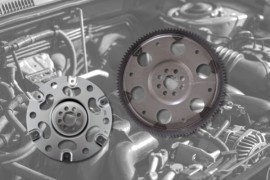{
"lazyNodes": false,
"abFitnotesFlag": false,
"abCrawlReviews": false,
"productOptionsCookie": false,
"orderDelayFlag": false,
"skipSessionCookie": false,
"covidMessage": false,
"fullTitleCookie": false,
"nrLoggerCookie": false,
"checkoutReviewCookie": false,
"productOptionSeqCookie": false,
"maintenanceFlag": false,
"bufferETACookie": false,
"multiShippingDiscountFlag": false,
"newFitmentFlag": false,
"surveyOptInFlag": false,
"crossSellFlag": false,
"skuMappingFlag": false,
"paySplitCookie": false,
"callDisableFlag": false,
"zipPaymentFlag": "u",
"hassleFreeReturn": false,
"lifetimeReplacement": false,
"cpn_off": false
}2009 GMC Yukon XL 2500 Flex Plates
Shop Catalog
- 2009 GMC Yukon XL 2500 SLT 8 Cyl 6.0L Neutral Internal Balance, 168 Tooth, 6 Bolt
- 2009 GMC Yukon XL 2500 SLE 8 Cyl 6.0L Neutral Internal Balance, 168 Tooth, 6 Bolt
![]() WARNING: This product can expose you to chemical which is known to the State of California to cause cancer and birth defects or other reproductive harm. For more information go to www.P65Warnings.ca.gov.
WARNING: This product can expose you to chemical which is known to the State of California to cause cancer and birth defects or other reproductive harm. For more information go to www.P65Warnings.ca.gov.
- 2009 GMC Yukon XL 2500 SLT 8 Cyl 6.0L transmissionmfrcode : 6L90
- 2009 GMC Yukon XL 2500 SLE 8 Cyl 6.0L transmissionmfrcode : 6L90
![]() WARNING: This product can expose you to chemical which is known to the State of California to cause cancer and birth defects or other reproductive harm. For more information go to www.P65Warnings.ca.gov.
WARNING: This product can expose you to chemical which is known to the State of California to cause cancer and birth defects or other reproductive harm. For more information go to www.P65Warnings.ca.gov.
Popular Products

ACDELCO OE REPLACEMENT FLEX PLATE
The factory-original fit and lasting function of ACDelco’s OE replacement Flex Plate provides the perfect repair without breaking your budget. Established in 1899, ACDelco manufactures original GM parts and premium OE r...

HAYS FLEX PLATE
Restore and improve the transmission of your vehicle with Hays Flex Plate. This flex plate helps in transferring power from the engine to the transmission. This is made from high grade components to ensure safety while being used and durability.
...Product Questions & Answers








